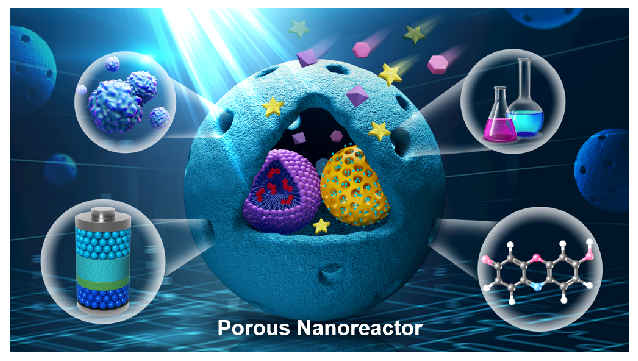In nature, chemical reactions often occur inside confined spaces such as cells, cellular organelles, viruses and more. Benefiting from the multi-level hollow structures and specific biochemical functions of cells, chemical conversions can be regulated at the nanoscale or even at the molecular and atomic level.
Porous nanoreactors mimic the structures and functions of cells, providing an adaptable material with multiple functions and effects. These reactors can be nanoscale containers and shuttles or catalytic centers, drawing in reactants for cascading reactions with multishelled designs.

Recently, a research group led by Prof. Jian Liu from School of Chemistry and Chemical Engineering, Inner Mongolia University, in cooperation with Prof. Dongyuan Zhao (Academician of CAS) from College of Energy Materials and Chemistry, Inner Mongolia University and Department of Chemistry, Fudan University, published a review article entitled “Understanding the chemistry of mesostructured porous nanoreactors”.
In this Review, the authors define the basic structural characteristics of porous nanoreactors, while also discussing the design principles and synthetic chemistry of these structures with respect to their emerging applications in energy storage and heterogeneous catalysis. Finally, they describe the difficulties of the structural optimization of these reactors and propose possible ways to improve porous nanoreactor design for future applications.
The review paper was published in Nature Reviews Chemistry (Nat. Rev. Chem. (2024). https://doi.org/10.1038/s41570-024-00658-3) and financially supported by the National Natural Science Foundation of China (22088101, 22375107), National Key R&D Program of China (2024YFE0101100).
The authors also thank Prof. Can Li, Prof. Gaoqing (Max) Lu, Prof. Shizhang Qiao, and Prof. Qihua Yang for their academic guidance and support.
https://www.nature.com/articles/s41570-024-00658-3